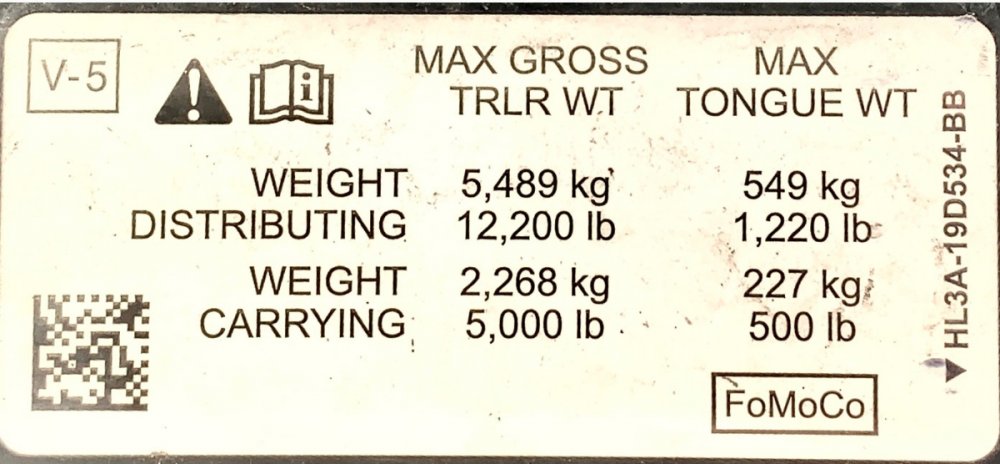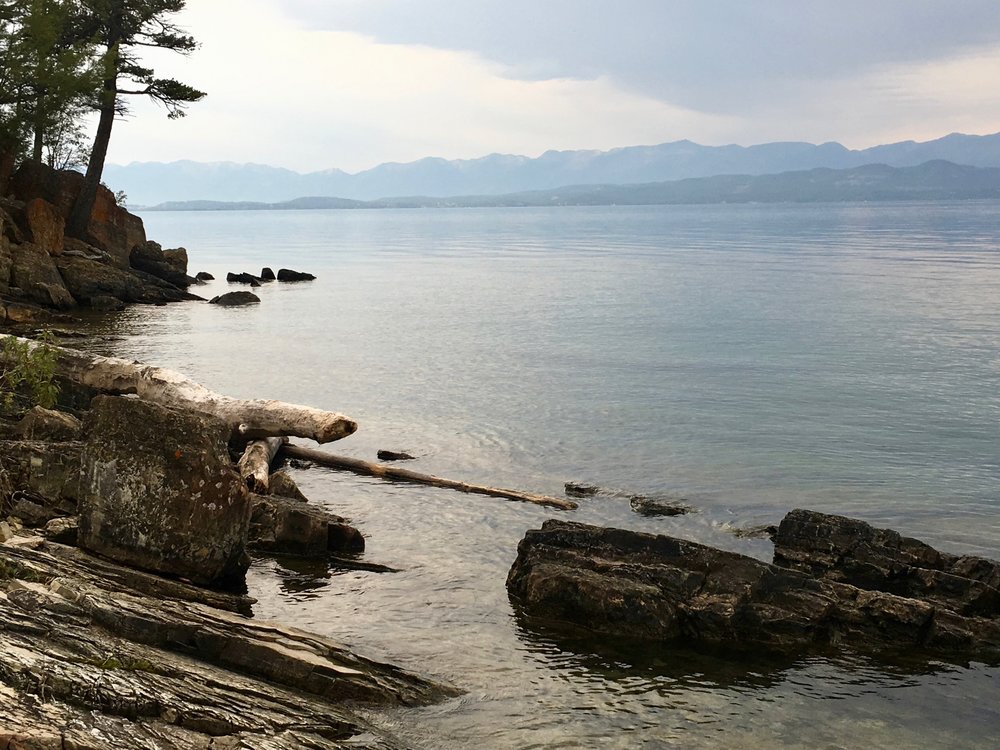Leaderboard
Popular Content
Showing content with the highest reputation on 10/15/2020 in all areas
-
We shoot for 300 miles a day. That gives us time in the morning for some coffee and gets us to our next location in time for a glass of wine before we fire up the grill. We’re retired, so we try to make the journey interesting and relaxing. We have covered more miles, a few times many more. When we go to Durango to visit our son and family we drive to Roswell, NM about half of the 900+ miles and finish the next day. Same on return trip. There just isn’t decent place to stop between San Antonio and Durango except for the very small Red Barn RV Park in Roswell. Once, while camping on the Missouri River in Leavenworth, KS we were jolted out of sleep at 2am by emergency personnel and told to evacuate immediately. The river was cresting and a few hours after we left the campground was under water. We headed south on I-35 and had fierce storms the whole trip to include tornado warnings all around OKC with several touching down. We stopped at a Cracker Barrel in Waco after almost 700 miles and finished the trip home in the morning. Our Ollie tracked like a champ through high winds and driving rain. No leaks either! Mike2 points
-
I'm saving this post . . . . you'll retire some day 😀2 points
-
I live in Florida, now. There's a reason...1 point
-
Same for us . . . . . but we will certainly appreciate the extra bit of cushion the cold weather tolerance, even if it's just while it is sleeping in its carport during a spell of cold PNW weather while we are cozied up to the fire with a good book and a cup of hot chocolate, or other beverage 😁1 point
-
That helps, yes. But, it's actually necessary to winterize to (or close to) -50 in Northern Minnesota, Alaska, and some other places.1 point
-
Yes, and the Camper Service area used to be in the back (north side) of that same building. The "new" Service/Sales building is not actually new. But, it is in much better shape as compared to the old location. In the back (north side) of the "new" building Oliver will have some other products being manufactured. The Sales area is located in the front (south side) left and the camper Service area is in the front (south side) right of the "new" building. However, until renovations in this building are completed, the new Service area is temporally located about mid-way down the right side (east side) of the new building. Bill1 point
-
I usually try to keep it under 8 hours. I will push to 10, but only if not traveling or doing a short two to three hours on the next day.1 point
-
1 point
-
Overland - I am in awe at the amount of remodel/improvement you have done - seems like an Oliver in name only. The Overland RV, base by Oliver.....1 point
-
No _ it is a remodeled former industrial building. As Topgun posted- its at the end of Industrial Ave. According to Oliver it will house the Sales and delivery team, Service activities, and other Oliver business - non RV. It will be a great site - with plenty of room - no idea if there will be spots for overnighting.1 point
-
Overland, could you indeed use the existing big (4”) sewer pipe and also the black tank, as a kind of huge plenum underneath the NH toilet? I am just throwing things out here, since I never for a second thought about running heat up the street side of the floor. Once the warm air gets to the black tank, I am at all not sure how you would get it into the bathroom itself. Maybe some sort of riser/ register duct in the front of the partition wall where it connects to the hull wall.... A nice white gelcoated item with moisture baffles from Oliver would be the most elegant way. Just having a bunch of warm air flowing through the tank and out again (somewhere) would do a lot to warm the bathroom floor, and some would leak up through the hole under the toilet. If nothing else you would have a warm toilet to sit on.... Oooh, oooooh - how about cutting off the black tank vent under the vanity and run that to the existing register? That could work pretty well, I think. You could even add another 1.5 inch “vent” pipe from the tank if you needed more airflow.... With this design you could also use the black dump valve as a flow regulator, with the outside cable removed. And of course the black rinse pipe removed! John Davies Spokane Wa1 point
-
Nope - it is not in the same location. I don't have the address handy but if you turn north at the WalMart stoplight, cross the railroad tracks and proceed to the end of the street - the new sales office and service center will be right in front of you. Bill1 point
-
As Scubarx said,, if we are camping in the summer with the trailer in tow, the oliver is the safe place for the dog, not the truck. Bath window and vent open, bath door propped open, fan on. The trailer is secure. The dog is comfy. I will say, we don't travel out west in extreme summer desert heat.1 point
-
The upper light is really tough, as the curves/corners are really tight. It's also the main source of leaks, which often seem to be from the windows. I wish Oliver would change to an applied light, frankly.1 point
-
1 point
-
I chimed in on the topic of transporting bikes on the rear of the trailer last year. My Background/expertise comes from being an executive at Yakima Products for 20 years. I'm impress with some of these creative and eloquent solutions. I simply want to voice to proceed with an abundance of caution when engineering bike soultions that attached to the rear bumper of any trailer. As I stated before, the forces at the rear of a trailer are magnitudes greater than at the hitch of your tow vehicle. The axle of your trailer is a giant fulcrum/pivot point and the rear of your trailer is the launching point. There are very few products designed to withstand the forces generated at the rear of a trailer. At this time Yakima only makes two hitch mounts that are approved for use on the rear of a trailer. LongHaul - https://yakima.com/products/longhaul?_ga=2.263397708.1569403010.1602517930-2113444950.1601489236 RoadTrip - https://yakima.com/products/roadtrip?_ga=2.263397708.1569403010.1602517930-2113444950.1601489236 This means that none of the other 50+ bike racks made by Yakima are approved or designed to be used on the rear of a trailer. I would go as far to say that most of the bike systems being used on the rear of trailers are not rated for the dynamic forces being exerted on them. The majority of these bike systems are being miss-used and are at risk of a catastrophic failure. I have never spoken to the folks at Oliver but I trust you should not exceed the recommended load limits specified by the factory. In my early years at Yakima, I always felt that engineers were way too conservative resulting in not being able to make product to carry loads in ways that seemed fine to me. This was based on my own extensive experience using our products. It was the classic conflict between the marketing team and the engineering team. Fast forward many years and one of my roles was being responsible for all the warranty and customer service activities. At the time we fielded in the range of 500,000 calls per year. Every Monday morning after our customers spent the weekend transporting their toys, the phone lines were jammed with every situation you could imagine about gear that had fallen off and hit the road or got scrapped off from a low overhang or what ever. 98% + of the gear that found its-self on the road was due to consumer installation errors, miss use and overloading. My point: your personal experience and general judgment of what will work should not exceed the engineering guidelines. You can get away with exceeding these guidelines for a long time until that one compression, bump or off road water bar will get you. Now that catastrophic failure is happing to you. All you need to do is spend one day listening to the Monday morning calls coming into Yakima. The call starts with, "I was just driving down the road and my rack and bikes came off my car and were run over by the car behind me". After, learning more about what actually happened, 98% of the time, the products were WAY OVERLOADED or MISS-USED in some way. The final story I will leave you with is when I was driving north on California highway 101 earlier this summer. The road is rough and curves through the giant redwoods. I came around a sharp curve and came upon four bikes that were attached to an entire fifth-wheel ladder laying in the middle of the road. About a mile ahead was the first safe place to pull off the road. At this point was an enormous fifth-wheel trailer with holes ripped out of the back of the trailer where the ladder was once attached. You see bikes on fifth-wheel trailer ladders all the time. It's one thing for a 250 pound person to climb that ladder when the trailer is not moving. Its another to load that ladder with a 100 pounds of bikes that are getting tossed and flung around mile after mile after mile.1 point
-
The other thing I will say is, the smaller Elite is great for one person, or a couple willing to share a full size bed. Small, light, nimble. Great in the u turns JED mentioned . Wide range of available tow vehicles . When our nephew camps with us, (he was over 6' at 13), he opts for a small tent beside our trailer . The independence thing...1 point
-
The Elite I fits about anywhere. I have photos (somewhere) of ours, and Pete's backed into tiny (what should be called tent spaces,) between trees. How tall is your son? Do you tent camp together, now? I ask that, because the Elite I is definitely smaller. Two adults in a tiny trailer is more like tent camping, but climate controlled, and way more comfy . Can a 6 ft person sleep in the small dinette bed? Yes. But, it's narrow. 24" wide, like a small camp cot or sleeping bag. Have you seen a smaller Elite?1 point
-
1 point
-
Gettin to be a tough forum. Better do your homework before you post, David. 😂1 point
-
Try searching for the word skiing. Then sort through the 27 responses for member DonnaDuane. Send him a PM and he might be able to help with your request. Mossey1 point
-
I think you got to the nub of the issue - the 2" is more common. I would add that given the size and weight of the Oliver, the 2" Bulldog is more than adequate for the vast majority of people. Your 2020 Tundra is certainly a nice truck and will tow the Oliver well. You might want to check though - I'm guessing that the weight distribution hitch is required in order for you to maintain your warranty by Toyota - Ford, GM and Dodge all require it for 1/2 ton trucks. Bill1 point
-
1 point
-
I wouldn't call it sage. Just my experience. Other folks , talented drivers like @Overland, have shown the Ollie can strut itself in much more extreme conditions than I like. I just think it's important to recognize that most folks really don't want to go down unmarked boulder strewn paths. We just want sturdy trailers for off pavement/gravel, at reasonable speed. That's me.1 point
-
For used, even new, with today's low interest rates, borrowing against existing assets (home, stock account, etc.) may be more advantageous than a loan on a trailer. Just my thoughts.1 point
-
Thanks for the review! Just ordered one. Will need it for a complete solar install once we get our Elite 1 home from Hohenwald in March.1 point
-
I'm of the opinion that our trailers have plenty of clearance, for most people. They are not Aussie outback trailers. They also don't carry that 110k plus price tag of the Bruder. We have camped for 13 seasons, in some crazy places, without issue. We use common sense, take it easy, and live with our choices. There are some here who would like different features, different suspension. I'm not one of them. I love the comfort of my trailer. The sturdiness. The feeling of home . But then, we don't want to go rock crawling, intentionally. We did it a few times, unintentionally. I'm too old for that. We don't avoid unpaved roads, but we don't take our trailer down narrow, rocky essentially atv trails, either. For coe, nfs, state and provincial parks, etc, where we have camped in our 100,000 miles through the US and Canada, we feel like our 2008 unit has been golden. We boondock (camp without hookups) 99 per cent of the time And, we're not as heavily tech laden, like a lot of others. Sometimes, I compare it to cooking. I typically travel with one skillet, one pot, a tea kettle, a roll of aluminum foil, and three good knives. All of which I really know how to use, to good effect. I could carry a lot more, but I don't need to. Good equipment, and a really good trailer, make life easier. Knowing how to use them is key. And, understanding your personal limitations, as well. (Stretching those limits is fun, too.😁) I'd put our 2008 Ollie and 2008 ram up against any of the sticky rvs we have delivered to Alaska over the last six years. Hands down.1 point
-
Yep. I never do any side to side fiddling as long as the site is reasonable. Many are pitched slightly toward the drain which works in your favor. Just scope the dump station out ahead of time and determine the side and direction that going to work best.1 point
-
I agree with this. At a dump station just be aware of front to back, with the front higher. If there aren’t folks waiting then you can fiddle with left to right, but I’ve found everything will drain fine if the front is a little higher than the back. Mike1 point
-
In addition to the safety factors and wear and tear factors there are the mileage factors. Several years ago while I was towing a trailer that weighed less than half of what the Oliver Elite II weighs I was driving West across Kansas fighting a 40 mph headwind. The issue became - I was getting 4 miles to the gallon. This made me have to stop for gas at least every hour and a half. Certainly no fun at all. Bill1 point
-
There are multiple threads on the Tacoma tow vehicle. Concensus seems to be, ok on flat, or hills, but not necessarily the higher mountains. Where are you coming from? And, where will you be going? If the tow rating is within 80 per cent if specs, it wouldn't stop me from a used trailer pickup. But, it might stop me from a camping trip in/through the Rockies. Sherry1 point
-
"Anyone know if a Toyota Tacoma w tow package is sufficient for hauling a loaded Elite ll?" Here's some real EII data from our Hull 505 to help you with your Tow Vehicle process: Check this real world data below against your Tacoma Payload, Tow Rating, and Hitch Ratings: ********************************************************************************** Empty Weight of EII as delivered at Factory, no water but 2 full 30Gal Propane Tanks Trailer 5465 Lbs -Tongue Wt - 635 Lbs GVWR for Oliver - 7000LBS We have almost Every Option: 4 AGM Batteries, Solar, Dual Awnings, Front Basket, Wifi and Wireless boosters, 2kW Inverter, Transfer Switch Weight of EII on Cat Scale Standing Alone - setup for camping, full of food, gear and water. Trailer 6400 Lbs - Tongue Wt - 750 Lbs (as high as 835Lbs when loaded with some gear in trailer in front of axels on floor.) The tow vehicle has several pieces of information and two that are very important: 1) Payload for Tow Vehicle - as listed on the drivers side door frame - This is the max amount you of weight to load into and carry in your vehicle. This includes passengers, any added post factory gear (like canopy's, tool boxes) and camping gear and it also needs to include the Tongue Weight of your trailer. Calc Example: (for 1/2 Ton Truck subtract all the cargo, passengers, gear and tounge weight to see what's left. So you see in that example, the truck payload is almost over capacity before adding all that other gear...bikes, ice chest, bbq, camp chairs, tools etc. Some gear can go into the trailer but you'll need to carefully "load" that trailer to not put it out of balance. Ladened Goal for Tongue Wt is minimum of 10% to max of 15% of the total trailer weight on the tongue. (for 6400 Lb Trailer, that's a range of 640-950Lbs) 2) Tow Capacity of the Tow Vehicle - often people want to have "margin" above the rated Tow Capacity for safety reasons. Example - Trailer has 7000LB GVWR, then you want about 9500 lbs of Tow Capacity to have upward margin. 3) What your Tow Vehicle Hitch states as Max Load both for dead weight carrying and with weight distribution. Here's a tag from an F150 factory installed hitch. Notice that it says 500 lbs for weight carrying, so for an Elite II ...you would need a Wt.Distribution Hitch like the Anderson Hitch offered as an option. Hope that's useful data for making a decision. Hull 505 - Galway Girl Craig Short1 point
-
Thank you for the images. I continue to appreciate the importance of quality wiring especially in this type of application. If re-work is needed due to poor workmanship it is probably very difficult.1 point
-
You can take the Blue Ridge Parkway all the way to Asheville and the scenery is great but it will take several hours. The shorter version is taking the Parkway from Cherokee to the Maggie Valley exit and then on to Asheville. If you have the time the Parkway is great. Just making it clear, I have had people going to Asheville jump on the Parkway thinking it was a the same time as thru Maggie, The Parkway is for beauty and enjoying the time.1 point
-
As well as better bikes . . . . . . and better bikes need better racks 😁1 point
-
Not sure how the switch from U.S. made Trojan batteries to the basically no-name Chinese produced batteries jive with your statement. I agree that some of the changes have been positive, but this is one that (in my view) is not.1 point
-
Because most of the better bike racks come with 2" receivers, and customers who buy better trailers tend to also buy better bike racks.1 point
-
My only input on the wiring with years of different Rvs its the best wiring I have ever seen.1 point
-
59 days til pick up.. 57 til we head toward Hohenwald.. but who’s counting.. Deb’s going to hook her rug while we are on the road this winter. SouthPlatte/Platte/Missouri/Mississippi/St.Croix/BoisBrule/Superior/Huron/French/Mattawa/Ottawa/St.Lawerence/Chaudiere/Kennebec/New Meadows..... no need to go through Panama🙂 St.George open through mid October?1 point
-
Hi Lexi, thank you to you & Oliver! As a quasi event planner in a previous life, I learned to capitalize on someone else's legwork. My suggestion is to find out where other RV groups hold their rallies & go from there. We're heading west next year & hope we can work this into our itinerary!!! Chris1 point
-
I'm looking forward to seeing the photos, too. Have to say, I'm always a bit jealous when I see another Lagun table install. 🤫 This year's budget and time is devoted to solar upgrades and maintenance projects on the boat and the trailer. But, I would so love a 24 inch table that folds out to 48 in the small dinette, that I could elevate and use as a counterheight work station when prepping or working on projects. Plus, I would love to add a wood tabletop, vs the original black fiberglass top. One of these days, maybe Santa will figure it out. 🎅 Sherry1 point
-
Hi we made this modification using Overland's instructions. I finished installing the mounting the bracket last Saturday. We made one slight modification in that I added aluminum backing plates. (overkill). I am having a folding table made out of mahogany by a local craftsman. I hope to install the table top this weekend. I believe this project will really enhance the usability of our trailer. Thanks Overland you came up with a terrific idea and execution.1 point
-
1 point
-
I found that when replacing my Bulldog coupler with the 2 5/16" model, that the bolts as installed from Oliver had bottomed out in the nuts before clamping sufficiently. This meant that almost all of the torque was going into twisting the bolt, rather than tensioning it. With insufficient clamping force, the holes in the Bulldog coupler had begun to elongate. A couple of grade 8 washers added to each bolt,fixed that problem. Lubing the bolt thread with either grease or anti-seize increases the tension on the bolt with any given torque value on the nut. In the case of engine head studs, for instance, the bolts are clamping the head to the engine, and bolt stretch is the best way of arriving at the design clamping force. Nut torque is just an easy way to get there without special tools, but not exact. In the case of the bulldog coupler, we need bolt tension and we need shear strength. The shear is more determined by the bolt hardness and diameter, while the tension is determined by the nut torque. In a perfect world, we'd get the bolt stretch specs and go for that by adjusting the nut torque. But in the real world, we use nut torque. It never is clear how much we should reduce the torque based on the affect of the thread lubrication. But it is clear that lubing the threads increases the tension. It may be that John had a defective bolt. It may also be that any problem with the bolt was made more obvious by lubing the threads, which increased the tension while torquing. It may also be that there was an unfair percentage of torque going into twisting the bolt because of the threads bottoming, or nearing the end of the threaded section. Since those bolts are not designed to be removed frequently, and since they are plated for corrosion, and since they may have been defective, I'd replace them and install them with no lube, while making sure the threads are not bottoming. We want the unthreaded shank to carry the shear load, so get bolts that have a long enough unthreaded length. Then add grade 8 flat washers to make sure the nut does not bottom before reaching full torque. If you have two torque wrenches, work them against each other on a nut and bolt, to see if they agree on their torque values. If not, get the best one calibrated or replace one of them. But really, the torque should not have to be very precise to work properly in this case. If the bolt is near it's full capacity, upsize it. It seems grade 8 is a good choice for the bolts because they are primarily in shear, but I'm not an expert on the differences between grade 5 and grade 8 in that regard. The torque is just a way to keep things from moving around while under load.1 point
-
Overland, it isn’t sensational, it is a safety issue, if the coupler manufacturer recommends one part, and Oliver substitutes a different part, and the torque values are different, it will cause problems. An owner may put in Grade 5 bolts and overtighten them because of the vague Oliver torque recommendation which never mentions the type of bolt. Whether or not my snapped bolt was a fluke is not the issue, it’s the need to establish which bolts are supposed to be used here. What was sensational was having that heavy bolt go bang and shoot at high speed across my garage. That is not something you want to happen during a trip. John Davies Spokane WA1 point
-
John had it right @ 80 FT LBS, Found the Fastenal Torque Value calculator: SAE J429 Grade 8 bolt 1/2" coarse thread: Recommended torques: 79.8 FT LBS WET 106.4 FT LBS Dry https://www.fastenal.com/en/83/torque-calculator1 point
-
John, Our Grade 8 failures were with Fastenal, too. Permatex Anti Seize is a lubricant. This statement from the following link: "Torque-Tension Relationship" " When applying an anti-seize to your components, the torque value to achieve the same clamp load will be lower. If anti-seize is used with the torque specified for a dry assembly, you risk exceeding the proof load of the fastener." https://www.manufacturing.net/article/2013/04/understanding-true-value-anti-seize1 point
-
John, We had several failures with grade 8 bolts on one industrial application and found the bolts were torqued wet (oil used) at the dry torque value, Never Seize would probably have the same results as oil, if used. This was several years ago, but must have been the same bolt size because remember 80FT LBS dry for that application. Once we started torquing dry threads the issue went away. If you go with Bulldog's recommended grade 5, would torque to the dry value with dry threads.1 point
-
Taking a look at your thread on replacing your coupler, I see that you used anti seize on the bolts. I’ve always been told that when you do that you have to lower your torque setting by 20%. So that’s possibly the answer.1 point
-
Oh you’re not talking me into that! But I promise if I were retired I’d make them for everyone.1 point
-
Recent Achievements



























